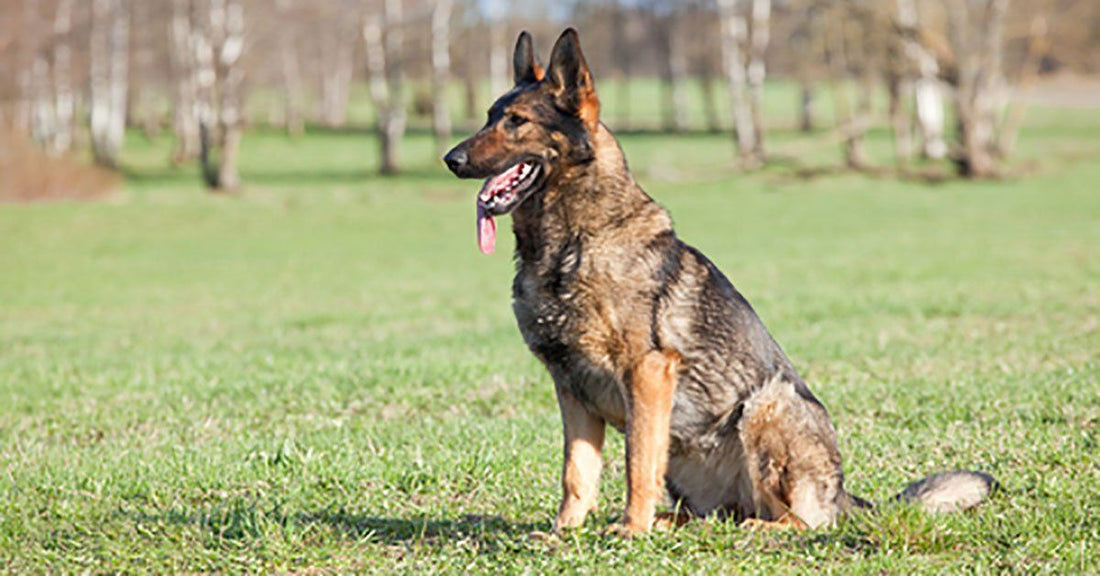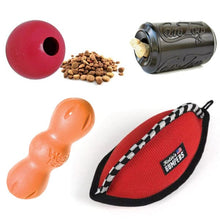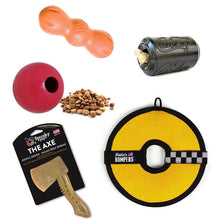The Recall: Training Your Dog to Come Reliably

The most important command to teach any dog is the recall. It can keep you, your dog and others safe. It can mean the difference between life and death during an emergency.
1.2 million dogs are hit and killed each year in the US alone. There are multiple steps you can take to prevent this from happening to your dog, such as erecting fences, kennels, using leashes and keeping your dogs indoors. But dogs get out through cracked doors. They escape from yards with unlatched gates. They take off after a car ride. Leashes get pulled from your hand and sometimes even break. When things turn bad, a solid recall can keep things from going from bad to worse.
1: The first step to a solid recall is having a good working relationship with your dog. A dog who wants to be near you and looks to you for guidance is a dog who'll want to come to you. If you outsourced your dog's training to a professional, you should still practice commands, including the recall, every day with your dog. It only takes 2-5 minutes to go through several repetitions of your basic commands and reward with food or toys.
Many old school trainers advise against using rewards in training, but that is outdated. We now know that just because you reward a dog for good behavior, it doesn't mean that a dog will not obey you unless you have food or a toy handy. Work with your dog for 2-5 minutes 3 times a day and you'll begin to build a working relationship where your dog is interested in working with you.
2: Be a positive force. Some people only use Positive Reinforcement, or what is often called "R+." Some people use leash corrections for dogs who know what they're being asked to do, but refuse to comply. Either route you choose, just make sure you never punish your dog for coming to you. If you correct a dog, go to the dog to correct it. If you're using a verbal correction, do not call your dog to you only to tell it "No." Here are real life examples of what not to do.
Example 1: Your dog is wearing a training collar and pull tab in the house. You catch your dog chewing on the leg of the coffee table. You call the dog to you and then correct him.
Example 2: You do not use physical corrections. You catch your dog chewing on the leg of the coffee table. You call the dog to you and tell him "No" or scold him.
In both cases, you've made coming to you a negative thing. It would've been better to correct the dog (physically or verbally) without ever calling him to you. The physical or verbal correction was enough to get your point across that the behavior wasn't allowed. It also should've instantly stopped the behavior that was in progress. There was no need to call the dog so that the dog's recall command was associated with the negative experience of being reprimanded.
3: Use the same command for the recall consistently. Don't use the dog's name today, "Come" tomorrow and "Here boy" the next day because you'll only confuse your dog. Choose what word you want to be your recall command and stick to it. If your dog's name is Fido and you use "Fido" as his command to come to you. Don't say "Fido, sit," because you're giving conflicting commands. He can't come and sit simultaneously.
4: Play recall games. Everyone loves games and so do dogs. There are many recall games you can play with your dog. A personal favorite is using 2 toys. Call the dog and reward by throwing a ball or other toy. Have a second ball or toy in your pocket or other hand. When the dog grabs the first toy you've thrown, call your dog. When the dog comes to you, command the dog to drop the toy or ball on the ground or politely release it into your hand, then toss the second ball or toy. The dog never feels it's prize is being taken. It's a trade instead. One boring toy that's not moving vs a toy that the dog knows will imminently be thrown? That's an easy trade to make for a dog who likes toys. Another fun game is for a friend to hold your dog on leash or by the collar while you run backwards or hide, then give the dog the command to come. Being held back while you're leaving the dog builds frustration. Frustration builds the drive to come to you. You can use toys or food as a reward for this game.
5: Use what works. Some dogs care more about food than toys. For those dogs, use food as a reward and don't be afraid of experimenting to see which foods your dog likes the most. Thoroughly cooked beef tidbits the size of a pea work great for most. The goal is to reward, not feed. Big pieces and hard treats take longer to chew and can break a dog's focus on training.
1.2 million dogs are hit and killed each year in the US alone. There are multiple steps you can take to prevent this from happening to your dog, such as erecting fences, kennels, using leashes and keeping your dogs indoors. But dogs get out through cracked doors. They escape from yards with unlatched gates. They take off after a car ride. Leashes get pulled from your hand and sometimes even break. When things turn bad, a solid recall can keep things from going from bad to worse.
1: The first step to a solid recall is having a good working relationship with your dog. A dog who wants to be near you and looks to you for guidance is a dog who'll want to come to you. If you outsourced your dog's training to a professional, you should still practice commands, including the recall, every day with your dog. It only takes 2-5 minutes to go through several repetitions of your basic commands and reward with food or toys.
Many old school trainers advise against using rewards in training, but that is outdated. We now know that just because you reward a dog for good behavior, it doesn't mean that a dog will not obey you unless you have food or a toy handy. Work with your dog for 2-5 minutes 3 times a day and you'll begin to build a working relationship where your dog is interested in working with you.
2: Be a positive force. Some people only use Positive Reinforcement, or what is often called "R+." Some people use leash corrections for dogs who know what they're being asked to do, but refuse to comply. Either route you choose, just make sure you never punish your dog for coming to you. If you correct a dog, go to the dog to correct it. If you're using a verbal correction, do not call your dog to you only to tell it "No." Here are real life examples of what not to do.
Example 1: Your dog is wearing a training collar and pull tab in the house. You catch your dog chewing on the leg of the coffee table. You call the dog to you and then correct him.
Example 2: You do not use physical corrections. You catch your dog chewing on the leg of the coffee table. You call the dog to you and tell him "No" or scold him.
In both cases, you've made coming to you a negative thing. It would've been better to correct the dog (physically or verbally) without ever calling him to you. The physical or verbal correction was enough to get your point across that the behavior wasn't allowed. It also should've instantly stopped the behavior that was in progress. There was no need to call the dog so that the dog's recall command was associated with the negative experience of being reprimanded.
3: Use the same command for the recall consistently. Don't use the dog's name today, "Come" tomorrow and "Here boy" the next day because you'll only confuse your dog. Choose what word you want to be your recall command and stick to it. If your dog's name is Fido and you use "Fido" as his command to come to you. Don't say "Fido, sit," because you're giving conflicting commands. He can't come and sit simultaneously.
4: Play recall games. Everyone loves games and so do dogs. There are many recall games you can play with your dog. A personal favorite is using 2 toys. Call the dog and reward by throwing a ball or other toy. Have a second ball or toy in your pocket or other hand. When the dog grabs the first toy you've thrown, call your dog. When the dog comes to you, command the dog to drop the toy or ball on the ground or politely release it into your hand, then toss the second ball or toy. The dog never feels it's prize is being taken. It's a trade instead. One boring toy that's not moving vs a toy that the dog knows will imminently be thrown? That's an easy trade to make for a dog who likes toys. Another fun game is for a friend to hold your dog on leash or by the collar while you run backwards or hide, then give the dog the command to come. Being held back while you're leaving the dog builds frustration. Frustration builds the drive to come to you. You can use toys or food as a reward for this game.
5: Use what works. Some dogs care more about food than toys. For those dogs, use food as a reward and don't be afraid of experimenting to see which foods your dog likes the most. Thoroughly cooked beef tidbits the size of a pea work great for most. The goal is to reward, not feed. Big pieces and hard treats take longer to chew and can break a dog's focus on training.
Some dogs won't even take food as a reward when outdoors or in new environments and therefore it's better to use toys to train those dogs. If your dog enjoys both, it's easier to teach behaviors with food, then when practicing known commands, reward compliance with a short game of tug or fetch. Not all dogs are the same and you have to find out what motivates the dog in front of you.
6: Your dog has a good working relationship with you from following step
- Your dog has nothing but positive experiences when coming to you from following step
- You have eliminated confusion by picking a single word to use for the recall from following step
- You have made coming to you fun from following step
- You have narrowed down what rewards work best for your dog from following step
- If you believe in R+ and not giving physical corrections, you can skip to the 3 asterisks (***) or read the rest of the article, it's up to you.
After a few weeks of using the aforementioned training steps; if you're positive that your dog knows the recall word and knows that the recall means to drop everything and come to you immediately and the dog chooses not to obey, now is the time to add corrections. We all have different views on dog training and sometimes the debate on using corrections or not using gets heated, but do you know who does use corrections in training? The majority of police departments and military. The majority of IPO trainers and a large portion of professional pet dog trainers and training schools do too. Don't let others make you feel bad for using fair corrections in training.
***If you train using R+, don't let people who use corrections make you feel like your time is wasted in training if you don't use corrections. Many top trainers and training schools do not use corrections. The key to a reliable recall without corrections is practice. Lots of it. Practice everywhere. At home, in the yard, at the park, loud locations, new locations. Train everywhere and around distractions once your dog knows it's recall command. The more stimuli your dog becomes accustomed to while training, the more likely the dog won't be distracted by new sights, sounds and smells.
The recall using R+ is solely dependent on the dog wanting to come to you, despite high levels of distraction. For an R+ recall to be reliable, coming to you must outweigh chasing after a squirrel, greeting a new dog, or saying hello to a family member or neighbor because that squirrel, new dog or neighbor may be across a busy road! This goes for people who use corrections as well. If you don't train around distractions, the chances of your dog ignoring your commands and investigating those distractions skyrockets.
Always use a long line when training the recall in new areas for your dog's safety. Always use a long line before trying off leash training in safe locations. Always use common sense. And most importantly, train every day!
Thank you for reading. Please share this with your friends, family and fellow dog lovers.








